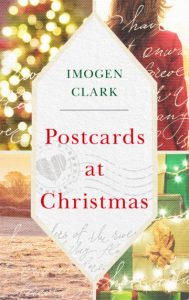Painless Editing in Easy Steps
 For many authors, editing a book is their favourite part of the process. They enjoy crafting their rough first draft into the elegant book that they had in mind when they started to write, hanging flesh on the bare bones of the plot and transforming it from a series of scenes into a work of literature.
For many authors, editing a book is their favourite part of the process. They enjoy crafting their rough first draft into the elegant book that they had in mind when they started to write, hanging flesh on the bare bones of the plot and transforming it from a series of scenes into a work of literature.
However, for me the editing is the least appealing part of the journey, and so I have adapted a method to try to make it all as painless as possible.
I am a discovery writer, so I make my story up as I go along. Whilst many other authors begin with a comprehensive outline, I just have my characters and a scenario and then I set off. I liken it to driving at night. I have a good idea of where I’m wanting to get to but I can only see as far down the road ahead of me as my headlights allow. Beyond that all is dark.
I generally begin a manuscript with all guns blazing but then my progress starts to slow. I start to feel my way along, edging from scene to scene and thinking hard about where a particular path might take me and my characters. Sometimes it seems like I will never get anything to mesh neatly together and I curse myself for not being to write a plan before I begin.
But I keep going.
Each day I write my allocated word count and then stop where I have a fair idea of what I will write the next time I sit down. I try to avoid beginning a day’s writing with a blank screen as that pushes me towards procrastination! Instead, I like to have somewhere to kick off from.
I always begin by rereading what I wrote the day before. This serves two purposes.
Firstly, it gives me a chance to edit the previous day’s work. I might change the sentence structure and the flow, eliminate repeated words and pick up any obvious typos.
This results in a cleaner first draft which makes the next stage of the editing process easier.
Secondly, it reminds me of where I’d got to the day before. One of the downsides (or possibly upsides, depending on your point of view) of making things up as you go along is that you are constantly taking yourself by surprise. I often forget details of the plot that I have included earlier, remembering only when I reread them!
As I move towards the middle of the book, I get more into my stride. I start to know my characters better and have a clearer feel for just how they would react to a given situation. This helps to make them more authentic and credible and writing them becomes easier the further into a manuscript we get.
I write fewer sentences that make me want to cringe and the mini edits that I do at the start of each day also become quicker. I also find that my subconscious starts to delivers material that just wouldn’t come when I was at the ‘planning’ stage. Ideas flow more quickly and I start to see how things are going to link together.
As themes emerge, I begin to understand just what my book is actually about. By this stage I am generally pretty excited about where the story is going and, even though I can still get stuck, I can usually write myself out of any blind alleys that I accidentally end up in.
Finally, the end comes into view. Often, I don’t know how the story will end until I get there and then it takes me by surprise. I might think that I still have a few chapters left to go only to realise that I have said everything that I need to say. By this point I usually have around 80,000 words in the bag.
Once I have reached the end of the story, I go straight back to the beginning. The next job is to make the start of the novel match the end. Often there are marked stylistic differences as I experiment with the voices in the early part of the story.
Sometimes I even need to switch tense or point of view but that doesn’t happen very often. More likely, however, is that I will need to change bits of the plot that I ditched as I went along. For example, in my most recent first draft one of the characters keeps a diary. When I started writing, I imagined that the protagonist would stumble across three volumes of it but as I went along I decided that the story would make more impact if there were only one and so I had to go back through and take out all the references to the others.
With first draft completed and edited as I went along, I send the book to my editor and wait nervously for her verdict. In the main, however, my structural edits tend to be light, with sections being added in to strengthen the characterisation rather than any wholesale plot changes. The copy editing and proofing stages of the process aren’t too onerous either and I put this down to the way that I edit my work as I write the first draft.
Of course, each writer finds their own way of getting to The End and are as many ways of getting there as there are writers, but this one works for me.
—
Bestselling author Imogen Clark writes contemporary book club fiction. Her books Postcards From a Stranger, The Thing about Clare and Where the Story Starts all reached the number 1 spot in the UK Kindle chart and her books have also been number 1 in Australia and Germany. Imogen initially qualified as a lawyer but after leaving her legal career behind to care for her four children, she returned to her first love – books. She went back to University, studying part-time whilst the children were at school and graduated with a BA in English Literature with First Class Honours. Her great love is travel and she is always planning her next adventure. She lives in Yorkshire with her husband and children.
Find out more about her on her website https://imogenclark.com/
Follow her on Twitter @imogenclark
POSTCARDS AT CHRISTMAS
 In this heartwarming follow-up to the bestselling novel Postcards From a Stranger, will Cara’s family past ruin her Christmas present, or will she let love in?
In this heartwarming follow-up to the bestselling novel Postcards From a Stranger, will Cara’s family past ruin her Christmas present, or will she let love in?
After discovering her mother’s secret life, Cara doesn’t have much faith in marriage.
So when the love of her life, Simeon, proposes, she struggles to say ‘I do.’ She adores him, but why risk the perfect relationship by signing on a dotted line that could ruin everything? If her parents’ marriage taught her anything, it was that a gold ring doesn’t equal happiness, and she has no desire to follow in their dysfunctional footsteps.
But maybe there’s a bigger picture after all. When a tragic accident brings yet more truths to the surface, Cara is forced to question everything she believes—and fears—about long-term love. And the answers aren’t obvious…
Could Cara rewrite her family’s history and create her own love story?
Category: Contemporary Women Writers, How To and Tips

























